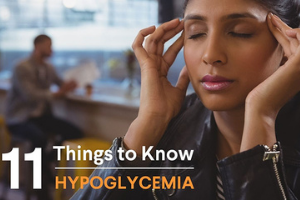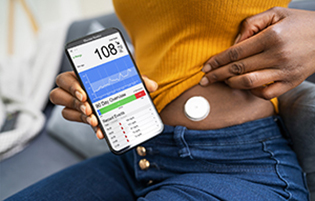
As we’re living through global pandemics and various natural disasters, emergency preparedness has taken on a whole new significance. While emergency situations are stressful and challenging for anyone, they can be potentially life-threatening to a person with a chronic medical disease such as diabetes.
Diabetic symptoms can occur anytime, and if you or a loved one has hypoglycemia or other insulin reactions, your symptoms can quickly become severe, causing you to faint, go in shock, or even lead to dangerous health problems. That’s why advance preparation is a key defense for chronic disease management during emergencies.
Whether an unexpected natural disaster occurs such as a blizzard, hurricane, flood, earthquake, fire, tornado, or an unforeseen situation of dealing with an auto breakdown, having an emergency diabetes kit can save your life.
That’s why we created the My Diabetes Emergency Plan. Launched in 2006, in response to the aftermath of Hurricane Katrina, the My Diabetes Emergency Plan is a convenient checklist that contains all of the essential items those with diabetes need to have readily available in the event of an emergency.
Download the checklist in English or Spanish or use the list below to put your kit together. Once you have prepared your kit, be sure to keep it handy and take it with you when you travel.
My Diabetes Emergency Kit Checklist
List of the following information:
- Type of diabetes
- All of your medical conditions, allergies and prior surgeries
- All medications (include pharmacy contact information, active prescription information and eligible refills)
- Previous diabetes medications and reason for discontinuation
- Contact information for all your health care professionals and at least two emergency contacts
- Letter from your diabetes health care professionals with most recent diabetes medication regimen (especially if taking insulin), health insurance card, living will, healthcare power of attorney, etc.
- Most recent laboratory results (especially A1C, kidney and liver tests)
Supplies:
- If possible, a 30-day supply of all medications taken by mouth or injection for diabetes as well as all other medical conditions
- Include insulin and severe hypoglycemia emergency therapy (e.g., glucagon - any delivery method) – if prescribed (always check expiration date)
- Blood glucose testing supplies including, if possible, 2 glucose meters with extra batteries
- A cooler with room for 4 re-freezable gel packs, insulin and unused injectable medications to be added when ready to go
- Note: Do not use dry ice and avoid freezing the medication
- Empty plastic bottles or sharps container for syringes, needles and lancets
- Source of carbohydrate to treat hypoglycemic reactions (for example, glucose tablets, 6 oz. juice boxes, glucose gel, regular soda, sugar, honey or hard candy)
Food and Water:
- A 2-day supply of nonperishable food (for example, peanut butter or cheese crackers, meal replacement shakes or bars, etc.)
- At least a 3-day supply of bottled water
Other Recommendations:
- Pen/pencil and notepad to record blood sugar, other test results and any new signs/symptoms suggesting medical problems
- First aid supplies such as bandages, cotton swabs, dressings and topical medications (antibiotic ointments or creams)
Outside the Box:
- Wear shoes and socks while awake and examine your feet often for cuts, sores, red spots, swelling, blisters, calluses and infected toenails or any unusual condition
- Make sure that all vaccinations, including tetanus, are up-to-date
- Pack extra comfortable clothing, including undergarments
- Take a mobile phone with an extra charger or extra batteries for you and family members
- Choose a designated meeting place in case you are separated from your family and/or significant others and are unable to reach them by phone
Take action and plan ahead, so you are prepared for any emergencies that may come your way.
Download your diabetes emergency kit checklist today in English or Spanish
Video: How to Pack Your Diabetes Emergency Kit
Learn how to prepare your diabetes emergency kit properly with this step-by-step video.
Help spread awareness by sharing the hashtag #mydiabetesemergencyplan on your social media sites with your friends and family. Diabetes emergency preparedness can help save lives!





